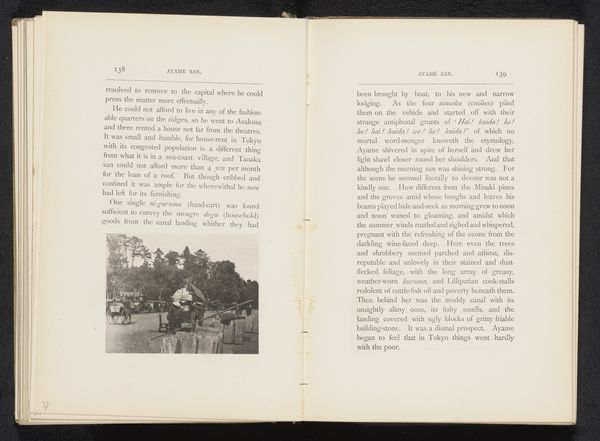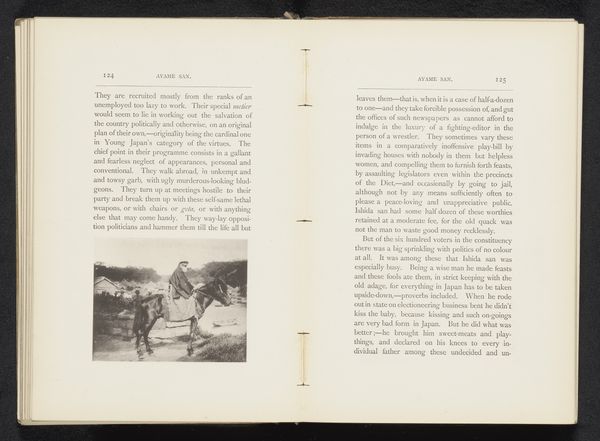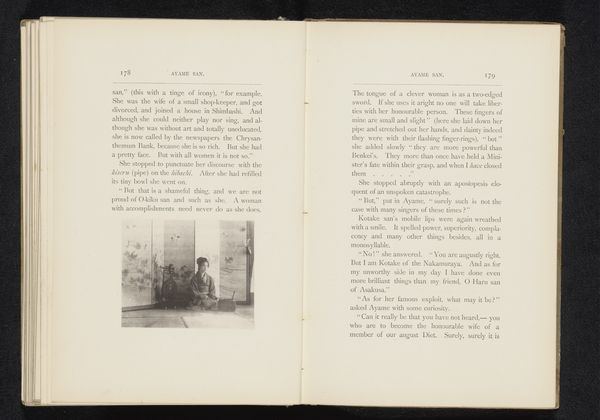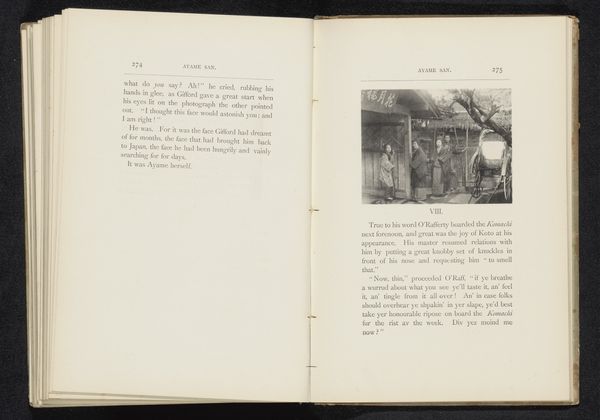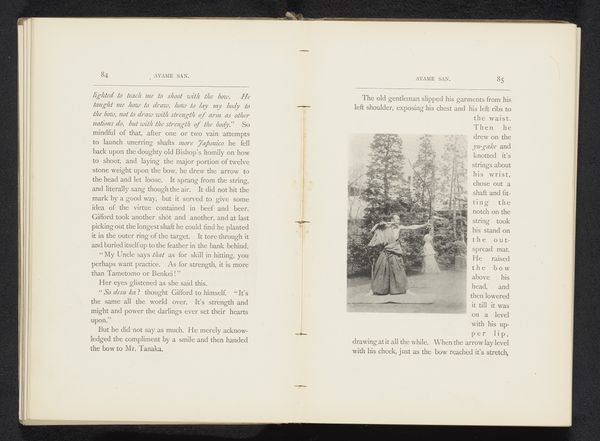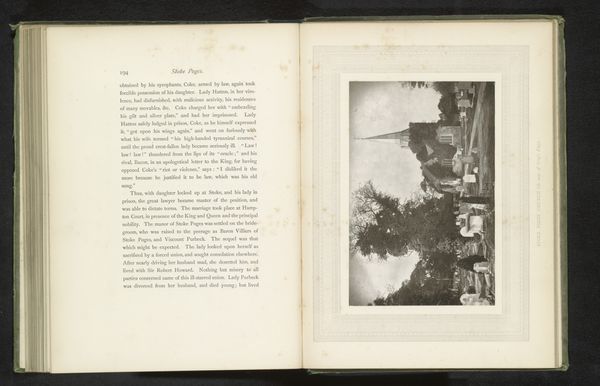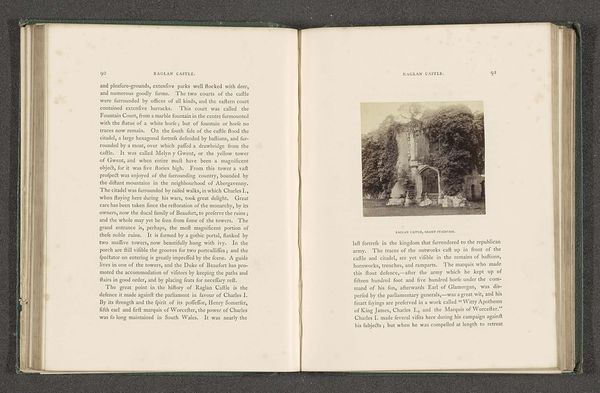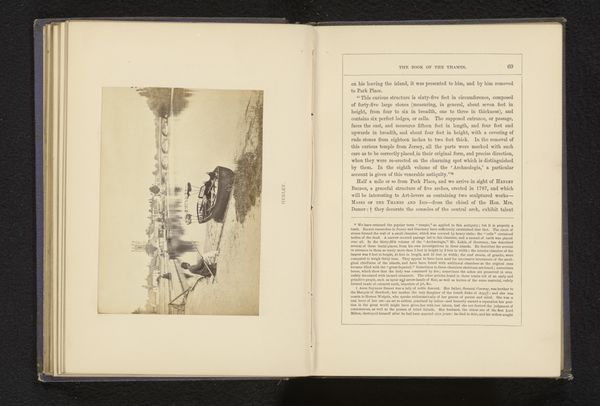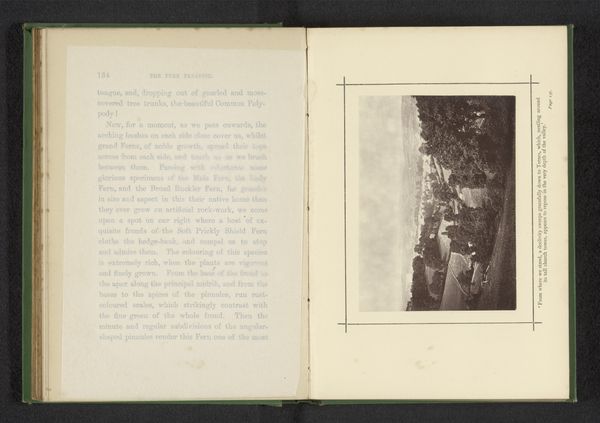
Dimensions: height 64 mm, width 84 mm
Copyright: Rijks Museum: Open Domain
William Kinnimond Burton made this photogravure titled ‘Man met een ossenkar te Japan,’ or ‘Man with an oxcart in Japan,’ sometime before his death in 1899. Burton, a Scotsman, lived in Japan during the Meiji era, a period of rapid modernization and Westernization. The photograph freezes a moment of everyday life, yet it is charged with the complex dynamics of cultural exchange and representation. Burton, as a Western photographer, inevitably captured Japan through a specific lens, one that was shaped by the aesthetic and cultural values of his time. How do we interpret this image today, knowing it was created during a period of colonial expansion and unequal power relations? Consider the labor of both the man and the ox, the weight they carry, and how this image might speak to broader issues of class and labor in Meiji-era Japan. It’s a quiet scene, but it holds within it the echoes of a society in transition, observed and interpreted through the eyes of a foreign artist.
Comments
No comments
Be the first to comment and join the conversation on the ultimate creative platform.
